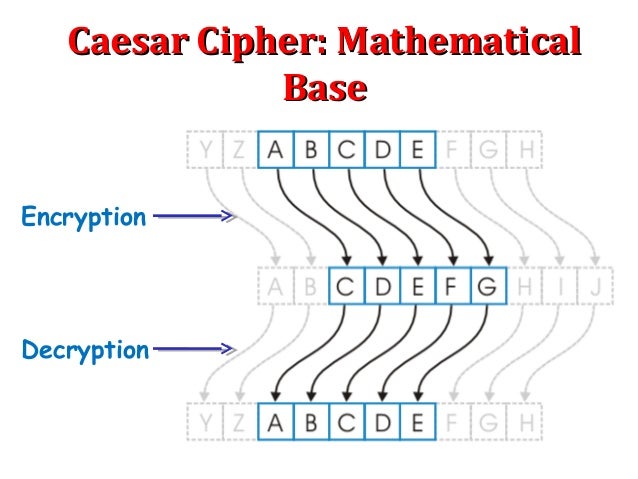Throughout history, cryptography has enjoyed the accompaniments of intrigue and enigma, captivating minds with its blend of art and science. Among the various cryptographic techniques, the Caesar cipher stands out as one of the simplest yet enduringly fascinating methods of encryption. Named after Julius Caesar, who reportedly used it to protect his military communications, this cipher allows for a straightforward substitution of letters by shifting them a fixed number of places down the alphabet. This article will delve into decrypting a Caesar cipher employing a shift of five positions to the left, exploring both the mechanics of the process and the underlying reasons for its perennial allure.
The essence of a Caesar cipher lies in its simplicity. The basic principle involves taking each letter of the plaintext and replacing it with a letter a fixed distance away in the alphabet. For a leftward shift of five, the letter “A” becomes “V,” “B” becomes “W,” and so forth, wrapping around the alphabet as needed. This method illuminates a fundamental aspect of cryptography: the transformation of ordinary language into a coded message, serving both as a protective measure and as a form of intellectual engagement.
To demonstrate this cipher in action, consider the plaintext message: “HELLO WORLD.” Using a shift of five left, we replace each letter as follows:
- H → C
- E → Z
- L → G
- L → G
- O → J
- (space remains unchanged)
- W → R
- O → J
- R → M
- L → G
- D → Y
Hence, the encrypted message becomes “CZZGJ RJMGY.” The beauty of this method lies in its straightforwardness, which belies the intellectual challenge it sets forth—decoding the cipher to retrieve the original message.
Decrypting the message, conversely, requires a reversal of this shifting mechanism. Instead of shifting left, one must shift right by five positions. When applied, the same computational logic re-emerges—every character is transitioned back to its original form. In practical terms:
- C → H
- Z → E
- G → L
- J → O
- (space remains unchanged)
- R → W
- J → O
- M → R
- G → L
- Y → D
This crucial operation restores the plaintext “HELLO WORLD.” The cyclical nature of shifts—both left and right—highlights how cryptography serves not only to safeguard information but also to illuminate patterns within written language and thought.
The elementary nature of the Caesar cipher, however, stands in contrast to the depths of its historical relevance and implications. Its roots lie deep in antiquity, and its use by prominent figures throughout history renders it a subject of academic interest, psychological intrigue, and even romanticism. Many scholars and hobbyists find themselves enthralled by the challenge of cryptanalysis, or the art of decoding messages, which fosters an appreciation for logical reasoning and abstract thought.
What drives this fascination? The allure may stem from the blend of simplicity and complexity that the Caesar cipher embodies. It serves as an accessible entry point into the world of cryptography. Novices can experiment with shifting letters to craft secret messages, while experts may engage in more complex analyses involving frequency distributions and deciphering patterns. The cipher’s uncomplicated rules forge a pathway towards deeper cryptographic theories and practices, invoking a sense of mastery and curiosity.
Moreover, the Caesar cipher’s historical context ignites interest in its real-world applications, prompting discussions on the importance of confidentiality and security in communication. The cipher illustrates fundamental principles that resonate within modern encryption techniques, establishing a lineage that culminates in sophisticated algorithms used today. This connection to contemporary technology enhances the relevance of studying ancient ciphers and encourages exploration of ethics in cryptography, particularly regarding data protection and privacy.
Furthermore, the nature of encrypted messages expands into the realm of human interaction and psychology. The act of sharing secrets, whether among friends, lovers, or adversaries, is a timeless social dynamic. The Caesar cipher encapsulates this behavior through its very function: encoding messages fosters trust within groups or creates barriers between factions. Thus, the cipher serves as a mirror to societal interaction, polysemous in its significations.
In summation, the act of decrypting a Caesar cipher with a shift of five left encompasses not only a technical exercise but also a reflection on the enduring and multifaceted nature of communication. The draw of cryptography lies in its intersection with history, psychology, and social dynamics. It remains an invitation to engage with language in a manner that transcends mere utility, unearthing layers of meaning and intrigue. Whether one unlocks the coded message for practical reasons or for the pleasure of intellectual challenge, the Caesar cipher stands as a testament to human creativity and the perennial quest for connection.








Leave a Comment